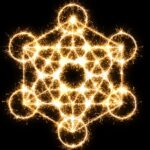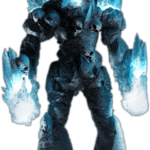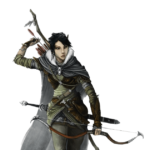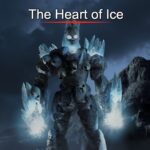Small humanoid (goblinoid), any alignment
- Armor Class 15 (breastplate)
- Hit Points 18 (4d6 + 4)
- Speed 30 ft.
| STR |
DEX |
CON |
INT |
WIS |
CHA |
| 10 (+0) |
12 (+1) |
12 (+1) |
10 (+0) |
8 (-1) |
8 (-1) |
- Skills Athletics +2, Perception +1, Stealth +5
- Senses darkvision 60 ft., passive Perception 11
- Languages Common, Goblin
- Challenge 2 (450 XP)
Wheelchair User. The goblin relies on a wheelchair for mobility, granting it advantage on saving throws against effects that would cause it to become prone and adds 50 percent to its dash movement. However, it has disadvantage on Dexterity (Acrobatics) checks. The wheelchair has AC 15 and 14 (4d6) hp. If the chair is destroyed, the goblin has a ten foot movement speed and uses its hand crossbow. Twenty percent of Wheelchair Cavalry Goblins are ambulatory wheelchair users and can walk at normal speed, but any round when they exert their legs (e.g., running, combat, jumping), they must succeed on a DC 16 Constitution saving throw or experience one level of exhaustion, cumulative each round of exertion.
Nimble Mobility. The goblin’s wheelchair is uniquely designed for speed and maneuverability. It can move through difficult terrain without penalty, and due to the chair’s supple frame, the goblin can use its Dexterity to jump, both to determine distance and associated Athletics checks.
Nimble Pivot. The goblin can take the Disengage action as a bonus action on each of its turns.
Actions
Hand Crossbow. Ranged Weapon Attack: +3 to hit, range 30/120 ft., one target. Hit: 4 (1d6 + 1) piercing damage.
Lance. Melee Weapon Attack: +2 to hit, reach 10 ft., one target. Hit: 6 (1d12) piercing damage.
Trip. If the goblin moves at least 20 ft. toward a target and then hits it with a Lance attack on the same turn, the target must succeed on a DC 11 Dexterity (Acrobatics) saving throw or be knocked prone and take an additional 2 (1d4) bludgeoning damage.
The Goblin Wheelchair Cavalry charges into battle with their lances held high, aiming to impale their enemies. As they strike, they twist the lance to hook onto their opponent's armor or flesh, before using their momentum to trip them and knock them off balance. They continue using their momentum to disengage from their target and fire their hand crossbow the next round as they escape.
The goblin's wheelchair appears to be a ramshackle contraption made from scavenged materials such as wood, metal scraps, and bits of fabric. The wheels are mismatched and slightly wobbly, but they spin smoothly, and the seat is padded with a patchwork cushion. The durable but springy frame is decorated with painted symbols and crude carvings, testifying to the goblin's pride in its ride.
The goblins of the horde live a dangerous life, and injuries and disease are common. Consequently, disabled members take on other roles in the community or adapt to their changed abilities. Warriors who lose their mobility train for an elite corps using specialized wheelchairs to become a mobile, hard-hitting cavalry unit, a feared and respected force on the battlefield, striking fear into the hearts of their enemies with their lightning-fast charges and deadly precision.





